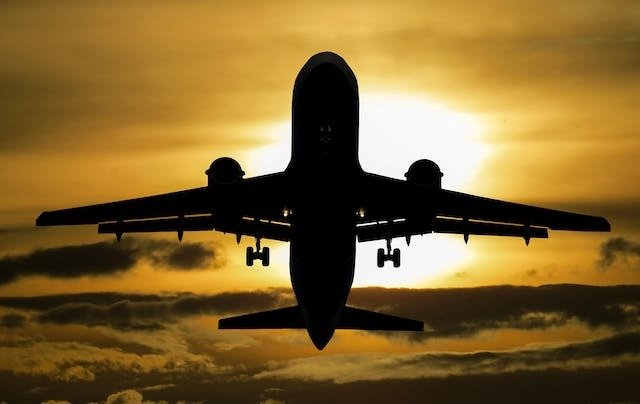Night Time Flights: 5 Aircraft Essentials Needed for Dark Skies

Embarking on a night time flight introduces challenges that demand specialized equipment to ensure safety and operational efficiency. These five aircraft essentials are crucial in facilitating nocturnal aviation, from navigating the dark skies to communicating with air traffic control. Implementing advanced technology and adhering to rigorous training protocols for pilots are integral components that contribute to the seamless execution of night time flights, safeguarding both passengers and crew while ensuring a secure journey through the darkened skies.
High-Intensity Lighting Systems:
High-intensity lighting systems are indispensable for ensuring safe and effective nighttime operations in aviation. These systems include powerful landing, taxi, and navigation lights strategically positioned on the Aircraft. Landing lights, set on the Aircraft’s nose or wings, emit intense beams to illuminate the runway during takeoff and landing, aiding pilots in assessing the terrain and ensuring a precise approach. Taxi lights, typically mounted on the Aircraft’s nose gear, illuminate the taxiway and enhance visibility while the Aircraft moves on the ground. Navigation lights, including red and green wingtip lights and a white taillight, help identify the Aircraft’s position and direction to other pilots and ground personnel. The high intensity of these aircraft lights is crucial for maintaining optimal visibility, minimizing the risk of collisions, and facilitating safe ground movements during low-light conditions.
Night Vision Systems:
Night vision systems in aviation are instrumental in overcoming the human eye’s limitations during low-light conditions. These advanced technologies, such as enhanced vision systems (EVS) and infrared imaging, significantly improve pilots’ ability to navigate and operate the Aircraft at night. Enhanced vision systems utilize sensors and cameras to capture real-time images of the Aircraft’s external environment, improving visibility in darkness or adverse weather conditions. Infrared technology detects heat signatures, allowing pilots to identify objects and obstacles even when traditional lighting is limited. Integrating these night vision systems into cockpit displays enables pilots to make informed decisions, increasing situational awareness and ensuring safer operations during night time flights. Adopting such technologies represents a pivotal advancement in aviation safety, contributing to the efficiency and effectiveness of nighttime operations.
Advanced Avionics and Navigation Equipment:
Advanced avionics and navigation equipment play a pivotal role in ensuring the safety and precision of night time flights. These sophisticated systems, including GPS (Global Positioning System), inertial navigation systems, and cutting-edge radar technologies, provide pilots with accurate and real-time information for navigating the skies in low-light conditions. GPS allows for precise determination of the Aircraft’s position, facilitating proper route planning and adherence to flight paths. Inertial navigation systems use accelerometers and gyroscopes to continually calculate the Aircraft’s position based on its initial velocity, ensuring reliable navigation without external references. Radar systems, both ground-based and onboard, enhance situational awareness by detecting nearby Aircraft and potential obstacles. Integrating these advanced avionics and navigation technologies empowers pilots with the tools to navigate the complexities of nighttime airspace, contributing to the overall efficiency and safety of nocturnal flights.
Enhanced Weather Radar:
Enhanced weather radar systems play a pivotal role in ensuring the safety of night time flights by providing pilots with advanced tools to monitor and navigate unpredictable weather conditions. These sophisticated radar systems go beyond traditional capabilities, offering improved accuracy and detailed insights into the surrounding weather phenomena. Pilots can use this information to make informed decisions about route adjustments, altitude changes, or deviations to avoid turbulent weather areas. The enhanced weather radar contributes significantly to the overall safety and efficiency of night time flights, allowing pilots to navigate through challenging weather scenarios with greater confidence and ensuring the well-being of passengers and crew. This technological advancement exemplifies the aviation industry’s commitment to leveraging cutting-edge tools for enhanced safety measures during night operations.
Communication Equipment with Redundancy:
Maintaining seamless communication during night time flights is paramount for aviation safety. Aircraft are outfitted with redundant communication systems to maintain continuous connection with air traffic control (ATC) and other Aircraft. This redundancy involves the integration of multiple VHF radios and satellite communication systems. VHF radios allow pilots to communicate with ground-based ATC and nearby Aircraft within line-of-sight. Additionally, satellite communication provides reliable communication, especially during flights over remote or oceanic areas with limited VHF signals. The redundancy of communication equipment adds an extra layer of reliability, mitigating the risk of communication failure and enhancing overall safety during night operations. This commitment to redundancy aligns with aviation standards, prioritizing the continuous and reliable exchange of crucial information.
Conclusion:
Navigating the dark skies demands specialized equipment to ensure the safety and success of night time flights. By incorporating these essential components, the aviation industry enhances its ability to conduct efficient and secure operations after sunset. Ultimately, the ongoing advancements in night-flight technology and protocols underscore the industry’s commitment to safety and open up new possibilities for global connectivity, allowing air travel to transcend the constraints of daylight hours and fostering a more resilient and adaptable aviation landscape.






